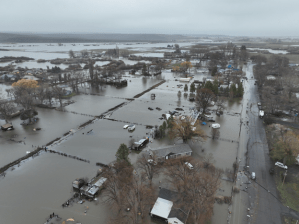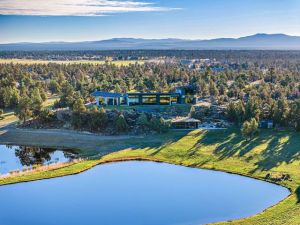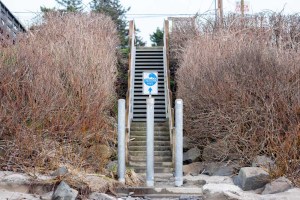Redmond growth rushes sewer plans
Published 5:00 am Saturday, May 25, 2002
REDMOND – Two years after its $15 million expansion, the city’s wastewater facility still needs to grow, and plans for another addition are now slated for 2005 – five years earlier than originally anticipated.
After a $5 increase in water and sewer rates last year, the city is planning another increase this summer. New rates, as well as an increase in the city’s sewer system development charges (SDCs), are expected to pay for the sewer’s expansion, as well as a 20-year project to extend the city’s sewer lines.
Trending
Mary Meloy, the city’s Public Works director, said her department is figuring out the new fee increases, which will be presented to the city council in the next few months.
Despite Eagle Crest Resort’s recent decision to pull out of a deal to connect 2,100 resort homes to the wastewater facility, an expansion to the facility is needed because Redmond’s population is booming, Meloy said.
Over the next three years, the city has earmarked $3.8 million to expand the sewer facility. Between 2005 and 2020, the city plans to spend another $8.2 million. If Eagle Crest was added, the total expansion costs would be 20 percent higher, Meloy said, but the resort would have helped pay.
City Manager Jo Anne Sutherland said the city would apply for federal and state grants, and it will consider bonds to pay for the expansion.
New sewer rates won’t be as high as last year’s $5 increase, she said.
About 5,750 houses and businesses are connected to Redmond’s sewer, and the facility treats 3 million gallons of wastewater per day. The treatment plant was built in 1978 mostly with federal grants. The facility was expanded in August 2000 on the expectation that Redmond would grow at a rate of 4.5 percent each year.
Trending
But the city has been growing much faster. Redmond’s population grew by 11 percent last year, and city planners expect about 10 percent growth this year.
In 2020, the facility is expected to treat 5 million gallons of wastewater per day, Meloy said.
Designs and ideas for another addition are just beginning, said Meloy, who expects the design phase to take one year and construction to take another.
And if Redmond voters approve a $54.5 million school construction bond in November, city engineers will have to focus their efforts on getting a sewer line to the new high school site at Elkhorn Avenue and Southwest Canal Boulevard, just outside the city’s urban growth boundary.
The city hadn’t planned a sewer line in the area until 2020. If a bond is approved, a sewer connection to the school district’s site would be needed in the next several years, which could cause city councilors to shuffle the city’s construction project plans, said city engineer Jeff England.
”It becomes a political situation at that point,” England said. ”There becomes political pressure from the school district for the city to reprioritize projects … (The site) has challenges in terms of infrastructure. We’ll do what we can do – I just don’t want to see the burden become the city’s.”
Redmond School District expects to spend $2 million out of its $27 million budget for the high school toward infrastructure needs, like water and sewer lines, as well as roads, said Doug Snyder, the district’s manager of support services.
Even without the connection to Eagle Crest on the city’s construction agenda now, the city plans to move toward expanding its facility, although not immediately.
Although construction crews recently installed a larger pipe size in its westside interceptor in anticipation of the resort’s connection, now it will simply serve the city’s growing west side. The city has no doubts it eventually will be used for the city’s own growth needs, England said.
”In my mind, the pressure is still there,” he said. ”The city needs it with or without (Eagle Crest). It just makes it more difficult financially because the whole burden is on the city.”
The city had expected to receive about $950,000 in its next fiscal year from the resort community to pay for the extension.
But despite the resort’s decision not to hook into the city’s sewer, the city’s pump station off Obsidian Avenue is already reaching capacity. And if sewer lines aren’t expanded soon in that area, building permits on portions of the west side could soon be denied, England said.
In the meantime, construction will begin this summer as crews install sewer lines along Northwest 19th Street and west across Hemlock Avenue. Another crucial step is to extend sewer lines from Northwest 19th Street west along West Antler Avenue to 33rd Street and Obsidian Avenue, England said.
The city last year began installing sewer lines toward Eagle Crest, about four miles west of Redmond. Called the westside interceptor, the new installation is the beginning of a 20-year plan to enlarge and renew sewer lines to the facility.
New sewer lines are paid for with SDCs because they are related to growth, especially when developers need larger lines leading into new housing developments, Sutherland said. Sewer fees also help pay for the new projects.
A full connection to Eagle Crest would have taken about three years to finish, Meloy said. Now the city won’t have to build some minor improvements along the sewer line.
Meloy said she realized the need for the sewer to grow before its expected 2010 date when she saw Redmond’s population jump.
”Right after the first year, I said OK, if another year goes on like this, we’d be facing expansion much sooner than we thought.’ ”
Jenny Slater can
be reached at 541-504-2336
or jslater@bendbulletin.com.








